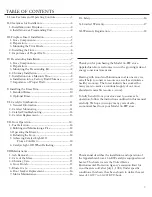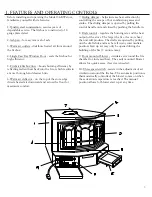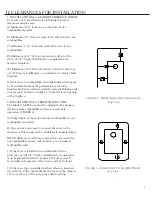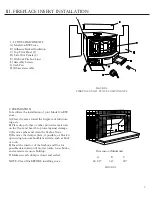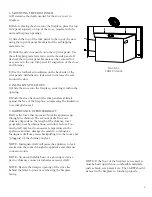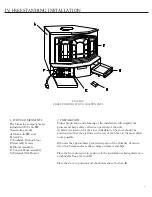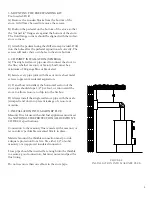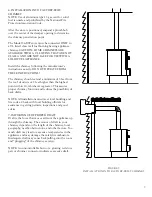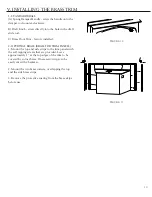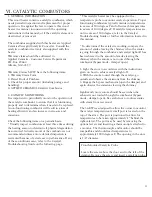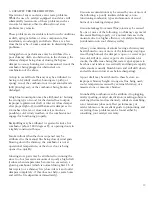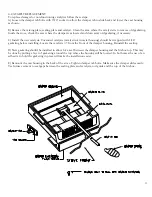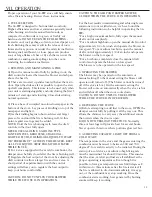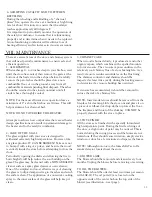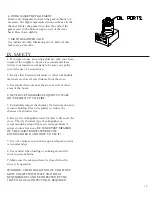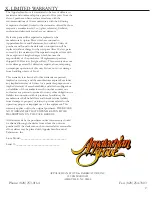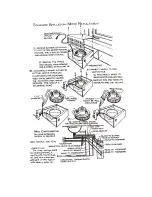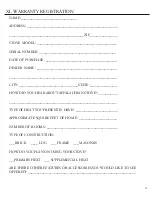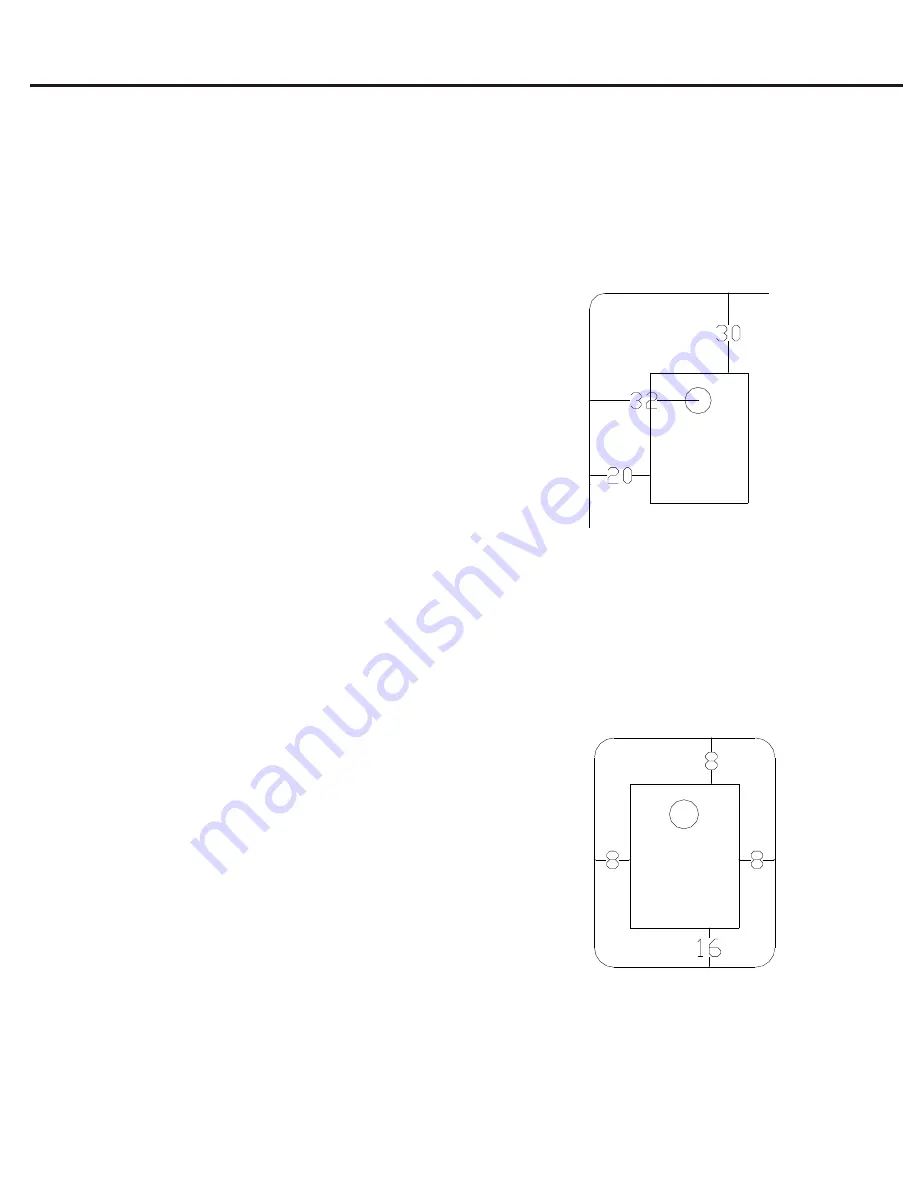
4
1. INSTALLATION AS A MASONRY FIREPLACE INSERT
To ensure a safe installation, the following minimum
clearances must be met:
A) Minimum of 16” from stove to the bottom of a
combustible material.
B) Minimum of 9” from the edge of the trim panels to any
combustibles.
C) Minimum of 12” from side wall of the stove to any
combustibles.
D) Minimum of 12” of floor protection in front of the
stove, of 3/8” fireproof millboard, or equivalent, for
masonry fireplace.
(E) Minimum of 12” floor protection in front of the stove
of 3/8” fireproof millboard, or equivalent, for factory built
fireplace.
(F) Clearance to combustibles with Appalachian trim panel.
To be installed without the pedestal into a masonry
fireplace built in accordance with the uniform building code
on a masonry hearth extending 12” from the front opening
of the fireplace.
2. INSTALLATION AS A FREESTANDING UNIT
The Model 36-BW stove must be installed with adequate
clearance from combustible surfaces to assure safe
operation. (FIGURE 2)
A) Composition of the wall structure (combustible or non-
combustible materials).
B) Type of stove pipe used to connect the stove to the
chimney or flue (single wall to double wall, insulated pipe).
NOTE: Walls of wood frame construction covered with a
non-combustible veneer, such as brick, are considered
combustible walls.
1. If the stove is installed on a combustible floor, a
protective pad of 3/8” fireproof millboard, or equivalent,
must be placed beneath the pedestal. It must extend 8”
from either side and rear of the stove, and 16” in front.
2. If the stove pipe is installed with an elbow to penetrate
the wall into a flue, the minimum clearance of the elbow is
18” from the top of the stove pipe and the ceiling.
II. CLEARANCES FOR INSTALLATION
FIGURE 2 - FREESTANDING CLEARANCES
(Top View)
FIGURE 3 - CLEARANCE TO COMBUSTIBLES
(Top View)
Summary of Contents for 36-BW
Page 18: ......


